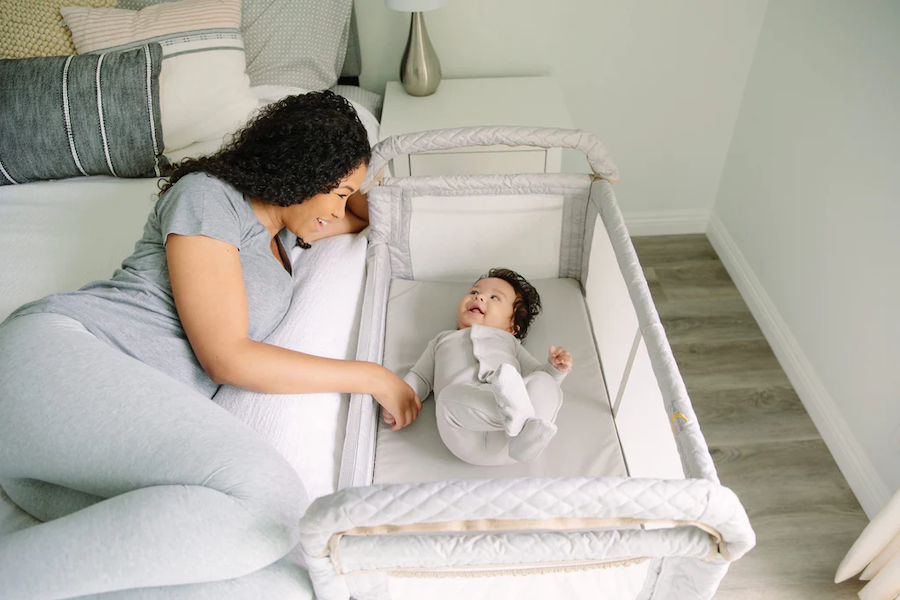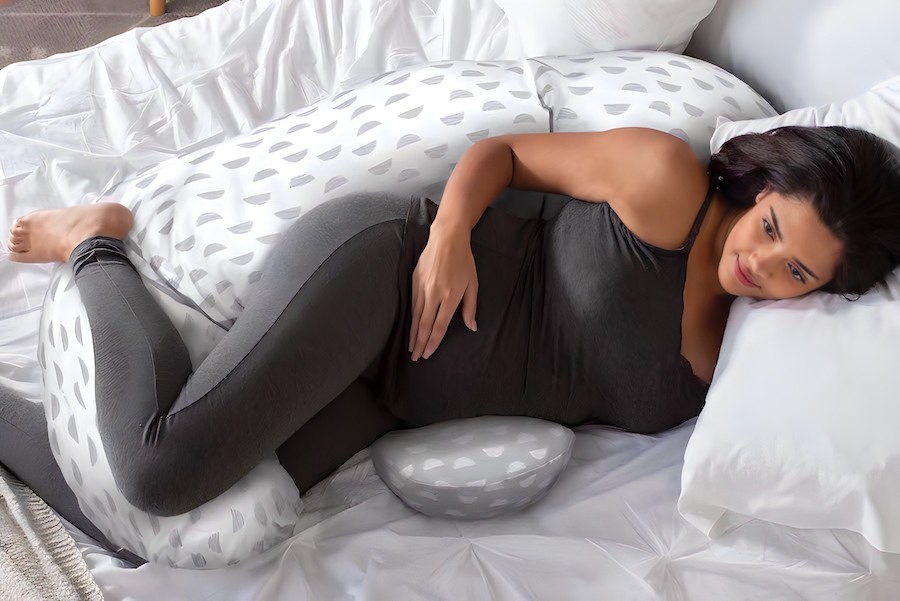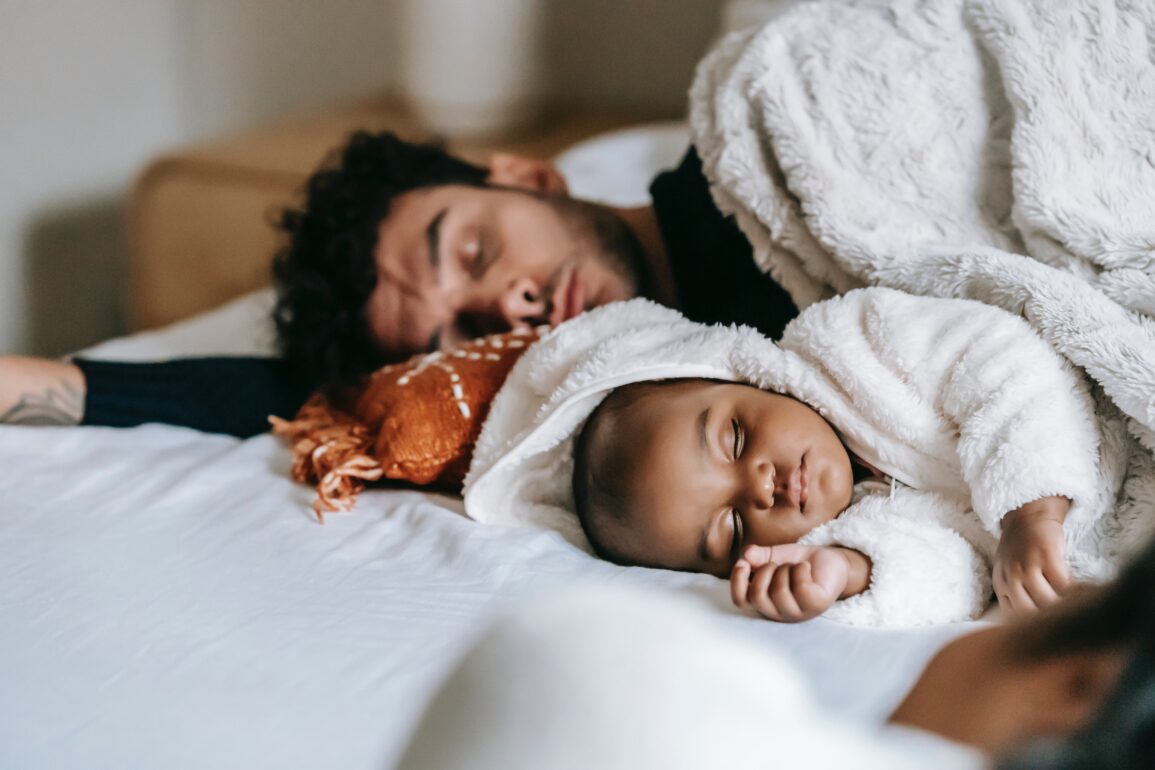So what is the deal with co-sleeping?
Co-sleeping, the practice of sharing a bed with children, offers benefits like easier night feedings and strengthened parent-child bonds. Yet, it’s not without risks, demanding adherence to safety measures. Let’s explore its nuances.
Is co-sleeping safe for children?
One of the numerous benefits of this sleeping arrangement is that co-sleeping can make nocturnal feedings easier. Parents don’t have to get out of bed and transfer to another room to nurse their child; they can simply roll over in bed. Because there will be less interruptions and the child will fall asleep more quickly after feedings, both the parent and the child may experience a better night’s sleep as a result.

Read More Blogs: Hucklebones: Dressing the Future, One Chic Child at a Time
Co-sleeping can also help parents feel a stronger feeling of connection to their child. Working parents, who might have less time to spend with their children throughout the day, may find this sense of comfort and bonding to be especially important. This sensation of familiarity and connection can develop when people are physically near to one another.
Co-sleeping has been associated with a number of potential health risks, all of which should be considered. Two significant risks that need to be considered are suffocation and Sudden Infant Death Syndrome (SIDS). Parents must stick to safe co-sleeping practices in order to lessen the severity of this threat. Among them is making sure their newborn is laid on their back on a hard surface and that there are no pillows or other soft objects around.
Another potential issue is that if children are allowed to co-sleep with their parents, they may find it more difficult to adjust to sleeping alone. According to some parents, their kids started to depend too much on them for sleep, which could later lead to problems with falling or staying asleep as well as other sleep-related problems.
Many parents still choose for the practice of co-sleeping with their children in spite of these potential drawbacks. There are numerous solutions that can make co-sleeping with children more secure and comfortable for parents who want to give it a try.
A co-sleeper is a bassinet that can be transformed into a bed that two people can share. These are made to be attached to the side of the bed in order to give the baby a safe and secure sleeping environment while yet allowing the parents to be nearby for the whole of the day. A highly suggested option is the Arm’s Reach Co-Sleeper Bassinet. This bassinet has sides made of breathable mesh for added safety and can be adjusted to fit different bed heights.
[Also Read : The Shy Child: What They Are Thinking and Feeling and How To Support Them]

A co-sleeping pillow is an additional item that may be useful. These are designed to provide a higher level of support and comfort for both people involved when a parent and child are sharing a bed. Because of its innovative form, which enables simple adjustment for ideal support and posture, the Boppy Side Sleeper Pillow is a well-liked option.

The last but not least requirement for safe and enjoyable co-sleeping is a mattress of appropriate quality. The Casper Original Hybrid Mattress is a highly recommended option because of its innovative design, which provides pressure relief and focused support. It also aids in temperature regulation because to its permeable fabrics, creating a temperature-controlled sleeping environment that is cozy for both the parent and the child.

Read More Blogs: Kids’ Sleepwear: Unveiling the Best Brands for a Cozy Slumber
It is crucial for parents to remember that their infant’s health should always come before everything else when it comes to proper co-sleeping techniques. The American Academy of Pediatrics recommends that babies sleep in the same room as their parents, but not in the same bed, for at least the first six months of a child’s life, and ideally for the entire first year.
When parents are co-sleeping with their children, it is also important that they make sure they are not under the influence of any substance, such as drugs, alcohol, or prescriptions. The younger child shouldn’t be placed on a pillow or blanket that is too soft when two people share a bed, and the older child shouldn’t be kept close to any soft objects like blankets or pillows.
Parents should also pay attention to their own sleeping patterns and preferences. Co-sleeping may not be the best idea for a parent who has sleep apnea or who sleeps a lot because they won’t be as aware of their baby’s movements as they would be if they didn’t share a bed with their child.
Although it can be a healthy habit for many parents and their kids to share a bed, it is important to be aware of the risks involved and to take precautions to lessen or eliminate them. For instance, some parents may determine that using a bedside crib or co-sleeper cot is a safer alternative than co-sleeping in the same bed with their newborn. The infant can sleep in their own room with the help of these solutions while still being close to their parents, making it easier for them to feed and comfort the baby at night.
Parents should consider the particulars of their individual family situations while deciding whether or not the practice of co-sleeping is suitable for their family. For instance, it may not be safe or practical for one parent to co-sleep with their child in that circumstance if they work midnight shifts or must take medication for a medical condition that makes them sleepy.
Understanding what their child needs to grow and develop at each stage is crucial for parents. Sharing a bed with a child may no longer be a secure or comfortable option for them as they get older and more mobile. When this happens, parents should make an effort to get their kids sleeping independently in their own beds as soon as feasible.
Despite these issues, many families discover that it is advantageous to sleep in the same bed. It can make nocturnal feedings simpler and less difficult, build a sense of proximity between the parent and the child, foster a sense of intimacy and security, and foster parental and child bonding.
For families who have decided to do so, there are a variety of products available that can help make sharing a bed with your child more comfortable and safe. Additionally, to co-sleeping bassinets, co-sleeping pillows, and premium mattresses, there are specially made sleepwear and blankets that can help control a baby’s temperature and reduce the risk of asphyxia. You can buy these items from retailers.
Co-sleeping with children can foster closeness and convenience for parents, but it requires caution due to potential risks like suffocation and Sudden Infant Death Syndrome (SIDS). Safe practices, such as using co-sleepers and monitoring sleeping conditions, are essential for a positive experience

